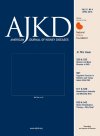AJKD Atlas of Renal Pathology: 2,8-Dihydroxyadeninuria
Patients may present in childhood with recurrent nephrolithiasis, but two-thirds do not present until the fourth decade. Adult patients present most commonly with nephrolithiasis, but chronic kidney disease (CKD), and less often acute kidney injury, may be seen. Patients may also present with urinary tract infection. 2,8-Dihydroxyadenine (2,8-DHA) stones are radiolucent and may be misdiagnosed as uric acid stones. Patients may be misdiagnosed clinically as having oxalosis due to elevated oxalate blood levels, however, levels are lower than with primary hyperoxaluria.



